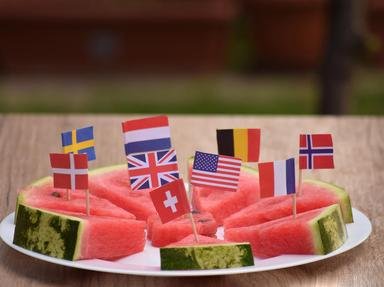Quiz Answer Key and Fun Facts
1. The name of the heraldic floral symbol of France, "fleur-de-lis", means "lily flower". The flower in question, however, is believed to be which of the following?
2. The golden wattle was proclaimed the national flower of this English-speaking nation in 1988, its bicentenary year. What large country is this?
3. The rose is the national flower of several countries, including England, Bulgaria, and the USA. What President declared the rose the national flower of the US in 1986?
4. Tulips are often associated with the Netherlands, where in the 17th century they became the object of a veritable craze. What transcontinental country - which gave these flowers their name - also claims the tulip as a national flower?
5. The national flower of Chile, the copihue is a rare plant that grows in the south of the country. Its binomial name, Lapageria rosea, references a high-ranking French lady named Marie Josėphe Rose Tascher de la Pagerie. By what other name is she better known?
6. Celebrated in a famous song, the pretty Leontopodium nivale is the national flower of which two mountainous European countries?
7. Which of these flowers - associated with death and cemeteries in many European countries - symbolizes the Imperial family of Japan?
8. With its alluringly spicy scent and frilly petals, the red carnation is regarded as Spain's national flower. With which neighbouring country is the carnation also associated?
9. Though South Africa's national flower may look like a kind of thistle, it is not related to Scotland's prickly national symbol. What is this large flower's name?
10. While no flowers appear on national flags, the lotus - also the national flower of India and Vietnam - is featured on the flag of which autonomous area in Asia, a former Portuguese colony, also known as "the Las Vegas of the East"?
Source: Author
LadyNym
This quiz was reviewed by FunTrivia editor
stedman before going online.
Any errors found in FunTrivia content are routinely corrected through our feedback system.
